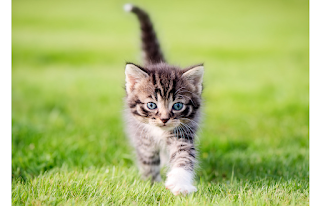Cats have long captivated our attention and affection with their mysterious and enigmatic nature. As beloved companions, they have woven themselves into the fabric of our lives, captivating us with their grace, independence, and occasional moments of aloofness. But have you ever wondered how our feline friends perceive us? In this article, we delve into the fascinating world of a cat's vision to understand how they see humans.
Cats and Color Vision
Contrary to popular belief, cats are not colorblind. While their color vision may differ from humans', they are not devoid of the ability to perceive colors. Cats possess a type of color vision known as dichromatic vision, meaning they see colors on a more limited spectrum compared to humans. Their visual palette is believed to be akin to that of a human with red-green color blindness. Cats can see certain shades of blue and green, but their ability to perceive reds and oranges is diminished.
Night Vision and Adaptation
Cats are renowned for their exceptional night vision. Their eyes are equipped with a specialized structure called the tapetum lucidum, which reflects light back through the retina, enhancing their ability to see in low-light conditions. Additionally, cats have a higher number of rod cells in their eyes, which are responsible for detecting light and motion. This abundance of rod cells contributes to their heightened sensitivity to even the slightest movements in the dark.
Peripheral Vision and Motion Detection
Cats possess an impressive field of view, reaching approximately 200 degrees, compared to humans' 180 degrees. This expansive peripheral vision allows them to detect movement from various angles, making them skilled hunters. Their eyes are strategically positioned on the front of their heads, providing them with binocular vision and depth perception. This enables them to accurately judge distances when pouncing on prey or assessing their surroundings.
Visual Focus and Recognition
While cats have excellent peripheral vision, their ability to focus on objects directly in front of them is somewhat limited. They rely on their keen sense of hearing and smell to complement their visual perception. When it comes to recognizing humans, cats primarily rely on their scent, voice, and overall body language rather than solely relying on visual cues. This is why cats often rub against their owners as a means of scent-marking and displaying affection.
Communication through Pupil Dilation
Cats' eyes communicate a wealth of information. By observing the dilation of a cat's pupils, we can gain insights into their emotional state. When a cat's pupils are dilated, it indicates heightened arousal, whether due to excitement, fear, or aggression. Conversely, constricted pupils are a sign of contentment or relaxation. Understanding these subtle visual cues can help us better interpret a cat's mood and respond accordingly.
Conclusion
While cats may not perceive the world in the same way we do, their visual abilities are optimized for survival in their natural environment. Their dichromatic color vision, exceptional night vision, and keen motion detection skills contribute to their prowess as skilled hunters. Understanding how cats see humans provides us with valuable insights into their behavior and helps strengthen the bond between feline companions and their human counterparts. So, the next time your cat gazes at you, remember that they see a world that's both similar and beautifully distinct from our own.


